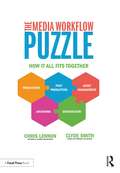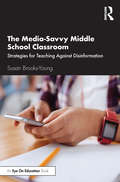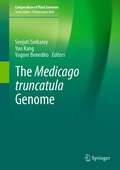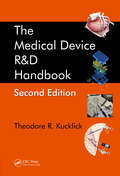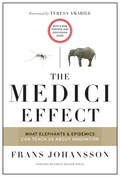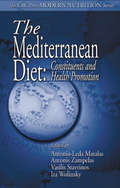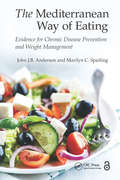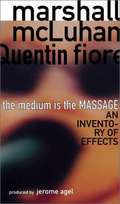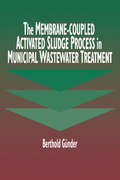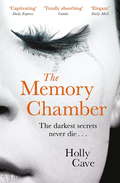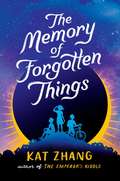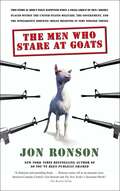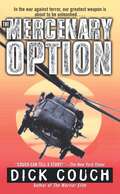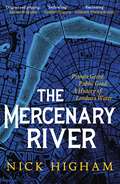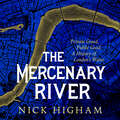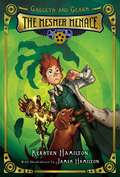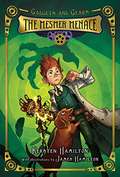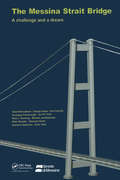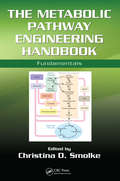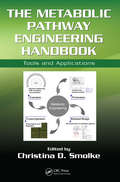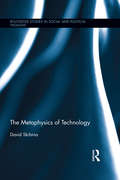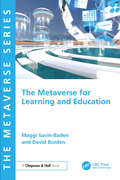- Table View
- List View
The Media Workflow Puzzle: How It All Fits Together
by Chris LennonThis edited collection brings together a team of top industry experts to provide a comprehensive look at the entire media workflow from start to finish. The Media Workflow Puzzle gives readers an in-depth overview of the workflow process, from production to distribution to archiving. Pulling from the expertise of twenty contributing authors and editors, the book covers topics including content production, postproduction systems, media asset management, content distribution, and archiving and preservation, offering the reader an understanding of all the various elements and processes that go into the media workflow ecosystem. It concludes with an exploration of the possibilities for the future of media workflows and the new opportunities it may bring. Professionals and students alike looking to understand how to manage media content for its entire lifecycle will find this an invaluable resource.
The Media-Savvy Middle School Classroom: Strategies for Teaching Against Disinformation
by Susan Brooks-YoungThe Media-Savvy Middle School Classroom is a practical guide for teachers of Grades 5-8 who want to help their students achieve mastery of media literacy skills. Today’s fake news, alternative facts, and digital manipulations are compromising the critical thinking and well-being of middle grade learners already going through significant personal changes. This actionable book prepares teachers to help their students become informed consumers of online resources. Spanning correct source use, personal versus expert opinions, deliberate disinformation, social media, and more, these ready-to-use activities can be integrated directly into existing language arts and mathematics lesson plans.
The Medicago truncatula Genome (Compendium of Plant Genomes)
by Senjuti Sinharoy Yun Kang Vagner BeneditoThis book focuses on the discoveries in M. truncatula genomic research which has been undertaken in the last two decades. Legumes are important for their economic values as food, feed, and fodder and also serve as the pillar of sustainable agriculture because of its biological nitrogen fixation capacity. Medicago truncatula was established as a model legume in the 1990s and has been well adopted as a model internationally since then. M. truncatula is an autogamous, diploid (2n = 16) species with a short generation time, and relatively small genome size (~375 Mbp). The M. truncatula genome was initially sequenced by the International Medicago Genome Annotation Group (IMGAG) in 2011 and has been well-annotated. M. truncatula research benefits from the availability of several genetic and genomic tools, such as gene expression atlas (MtGEA), insertion and neutron bombardment mutant populations, and a HapMap panel containing 384 sequenced inbred lines for genome-wide association studies. This book covers the current status and latest advancements of the M. truncatula genomics and transcriptomics resources along with a glimpse of newly developed tools that makes M. truncatula a front runner model in functional genomic studies.
The Medical Device R&D Handbook
by Theodore R. KucklickExploring the practical, entrepreneurial, and historical aspects of medical device development, this second edition of The Medical Device R&D Handbook provides a how-to guide for medical device product development. The book offers knowledge of practical skills such as prototyping, plastics selection, and catheter construction, allowing designer
The Medici Effect: What Elephants And Epidemics Can Teach Us About Innovation
by Frans Johansson<p>With Amazon Business, you would have saved $212.15 in the last year. Create a free account and save up to 13% today.</p><p>Why do so many world-changing insights come from people with little or no related experience? Charles Darwin was a geologist when he proposed the theory of evolution. And it was an astronomer who finally explained what happened to the dinosaurs.</p><p>Frans Johansson's The Medici Effect shows how breakthrough ideas most often occur when we bring concepts from one field into a new, unfamiliar territory and offers examples of how we can turn the ideas we discover into path-breaking innovations.</p><p>Clayton M. Christensen, bestselling author of The Innovator's Dilemma, has described The Medici Effect as "one of the most insightful books about managing innovation I have ever read. Its assertion that breakthrough principles of creativity occur at novel intersections is an enduring principle of creativity that should guide innovators in every field."</p><p>Now with a new preface and a discussion guide, and a foreword by Harvard Business School professor Teresa Amabile, The Medici Effect is a timeless classic that will help you reach your innovative peak.</p>
The Medieval Peutinger Map
by Emily AlbuThe Peutinger Map remains the sole medieval survivor of an imperial world-mapping tradition. It depicts most of the inhabited world as it was known to the ancients, from Britain's southern coastline to the farthest reaches of Alexander's conquests in India, showing rivers, lakes, islands, and mountains while also naming regions and the peoples who once claimed the landscape. Onto this panorama, the mapmaker has plotted the ancient Roman road network, with hundreds of images along the route and distances marked from point to point. This book challenges the artifact's self-presentation as a Roman map by examining its medieval contexts of crusade, imperial ambitions, and competition between the German-Roman Empire and the papacy.
The Mediterranean Diet: Constituents and Health Promotion (Modern Nutrition)
by Antonis Zampelas Ira Wolinsky Antonia-Leda Matalas Vassilis StavrinosAdults living in certain olive-growing areas of the Mediterranean Basin display high life expectancies and rates of chronic disease that are among the lowest in the world. These benefits are achieved despite socioeconomic indicators that are often much lower than those of more industrial nations in North America and Europe. Attention has focused on
The Mediterranean Way of Eating: Evidence for Chronic Disease Prevention and Weight Management
by John J.B. Anderson Marilyn C. SparlingThis book presents evidence-based research that validates the traditional Mediterranean way of eating with respect to health. It offers information about an enjoyable, healthy way of eating that has stood the test of time, along with practical suggestions for incorporating the Mediterranean diet into daily life. The book addresses nutrients found in Mediterranean foods, how they function in the body, and why they are essential for optimal health. It highlights the Mediterranean diet's effectiveness in weight management and prevention and treatment of various chronic diseases.
The Medium Is the Massage: An Inventory of Effects
by Marshall Mcluhan Quentin FioreFirst published in 1967, this text is now more relevant than ever, as McLuhan's foresights about the impact of new media is actualized at unprecedented speeds via the Internet. It portrays technologies as an extension of man, illustrating how our senses are massaged and our preceptions altered as these devices become integral parts of our lives.
The Membrane-Coupled Activated Sludge Process in Municipal Wastewater Treatment
by Berthold GuenderThis book represents a milestone. It is the first overall presentation that summarizes the membrane-coupled activated sludge process (MCASP) in its entirety. The volume offers a thorough survey of current know-how, an explanation of the operational MCASP in municipal plants with full-scale membrane modules, and a description of its advantages and d
The Memory Chamber: An elegant tale of love and loss
by Holly Cave'Vivid, compelling, and thought-provoking. Utterly original' Will Dean, author of Dark Pines 'At last a book that has it all. So beautifully written. I loved it' Amazon Reviewer**********An afterlife of your own design - what could go wrong? Isobel designs artificial 'heavens' for her clients, created from the memories they treasure most. She works for Oakley Associates, London's most prestigious firm of its kind. Her heavens are renowned for their beauty and perfection.But Isobel crosses an ethical line when she falls for Jarek, a new - and married - client. Then, in the wake of his wife's murder, Isobel uncovers a darker and deadlier side of the world she works in. As her life starts falling apart, Isobel realises that nothing is as perfect as it seems, not even heaven itself...**********'Wow! I started this book mid afternoon and finished it at 1:15 am. I just could not put it down' Amazon Reviewer'An elegant tale of love and loss, memory and murder, set in an edgy near-future' Daily Mail
The Memory Chamber: An elegant tale of love and loss
by Holly Cave'Vivid, compelling, and thought-provoking. Utterly original' Will Dean, author of Dark Pines 'At last a book that has it all. So beautifully written. I loved it'Amazon Reviewer**********An afterlife of your own design - what could go wrong?Isobel designs artificial 'heavens' for her clients, created from the memories they treasure most. She works for Oakley Associates, London's most prestigious firm of its kind. Her heavens are renowned for their beauty and perfection.But Isobel crosses an ethical line when she falls for Jarek, a new - and married - client. Then, in the wake of his wife's murder, Isobel uncovers a darker and deadlier side of the world she works in. As her life starts falling apart, Isobel realises that nothing is as perfect as it seems, not even heaven itself...**********'Wow! I started this book mid afternoon and finished it at 1:15 am. I just could not put it down' Amazon Reviewer'An elegant tale of love and loss, memory and murder, set in an edgy near-future'Daily Mail
The Memory of Forgotten Things
by Kat ZhangIn the tradition of The Thing About Jellyfish and When You Reach Me, acclaimed author Kat Zhang offers a luminous and heartbreaking novel about a girl who is convinced that an upcoming solar eclipse will bring back her dead mother. <P><P>One of the happiest memories twelve-year-old Sophia Wallace has is of her tenth birthday. Her mother made her a cake that year—and not a cake from a boxed-mix, but from scratch. She remembers the way the frosting tasted, the way the pink sugar roses dissolved on her tongue. This memory, and a scant few others like it, is all Sophia has of her mother, so she keeps them close. She keeps them secret, too. Because as paltry as these memories are, she shouldn’t have them at all. The truth is, Sophia Wallace’s mother died when she was six years old. But that isn’t how she remembers it. Not always. Sophia has never told anyone about her unusual memories—snapshots of a past that never happened. But everything changes when Sophia’s seventh grade English class gets an assignment to research solar eclipses. She becomes convinced that the upcoming solar eclipse will grant her the opportunity to make her alternate life come true, to enter a world where her mother never died. <P><P>With the help of two misfit boys, she must figure out a way to bring her mother back to her—before the opportunity is lost forever.
The Men Who Stare at Goats
by Jon RonsonBizarre military history: In 1979, a crack commando unit was established by the most gifted minds within the U.S. Army. Defying all known laws of physics and accepted military practice, they believed that a soldier could adopt the cloak of invisibility, pass cleanly through walls, and--perhaps most chillingly--kill goats just by staring at them. They were the First Earth Battalion, entrusted with defending America from all known adversaries. And they really weren't joking. What's more, they're back--and they're fighting the War on Terror. An uproarious exploration of American military paranoia: With investigations ranging from the mysterious "Goat Lab," to Uri Geller's covert psychic work with the CIA, to the increasingly bizarre role played by a succession of U.S. presidents, this might just be the funniest, most unsettling book you will ever read--if only because it is all true and is still happening today.
The Mercenary Option
by CouchAfter losing his son in the September 11 attacks, wealthy industrialist Joseph Simpson forms the Intervention Force (IFOR) -- a surgical strike team led by former Navy SEAL Garrett Walker. Officially, the group is a rogue operation with no government affiliation. But when the impossible becomes absolutely necessary, IFOR is... THE MERCENARY OPTION Shortly after the terror attacks on America, the American president announces the construction of an oil pipeline across Afghanistan. To stop this, and deter further Western encroachment in Central Asia, a vindictive Saudi prince retains ex-KGB terror broker Pavel Zelinkow -- a prime mover behind al Qaeda's 9/11 attack. Zelinkow plans to steal two nuclear weapons, detonating one of them among the pipeline construction crews and their military guardians, while the target of the second bomb is a mystery. U.S. special operations forces cannot be used against the terrorists hiding in Iran, so IFOR is called into action for the first time on a mission that will test them to their limits: take out the terrorists, recover the nukes, and get Zelinkow -- dead or alive.
The Mercenary River: Private Greed, Public Good: A History of London's Water
by Nick HighamAnyone interested in the real London needs to read this. - Andrew MarrNo city can survive without water, and lots of it. Today we take the stuff for granted: turn a tap and it gushes out. But it wasn't always so. For centuries London, one of the largest and richest cities in the world, struggled to supply its citizens with reliable, clean water. The Mercenary River tells the story of that struggle from the middle ages to the present day. Based on new research, it tells a tale of remarkable technological, scientific and organisational breakthroughs; but also a story of greed and complacency, high finance and low politics. Among the breakthroughs was the picturesque New River, neither new nor a river but a state of the art aqueduct completed in 1613 and still part of London's water supply: the company that built it was one of the very first modern business corporations, and also one of the most profitable. London water companies were early adopters of steam power for their pumps. And Chelsea Waterworks was the first in the world to filter the water it supplied its customers: the same technique is still used to purify two-thirds of London's drinking water. But for much of London's history water had to be rationed, and the book also chronicles our changing relationship with water and the way we use it. Amongst many stories, Nick Higham's page-turning narrative uncovers the murky tale of how the most powerful steam engine in the world was first brought to London; the extraordinary story of how one Victorian London water company deliberately cut off 2,000 households, even though it knew they had no alternative source of supply; the details of a financial scandal which brought two of the water companies close to collapse in the 1870s; and finally asks whether today's 21st century water companies are an improvement on their Victorian predecessors.
The Mercenary River: Private Greed, Public Good: A History of London's Water
by Nick HighamNo city can survive without water, and lots of it. Today we take the stuff for granted: turn a tap and it gushes out. But it wasn't always so. For centuries London, one of the largest and richest cities in the world, struggled to supply its citizens with reliable, clean water. The Mercenary River tells the story of that struggle from the middle ages to the present day. Based on new research, it tells a tale of remarkable technological, scientific and organisational breakthroughs; but also a story of greed and complacency, high finance and low politics. Among the breakthroughs was the picturesque New River, neither new nor a river but a state of the art aqueduct completed in 1613 and still part of London's water supply: the company that built it was one of the very first modern business corporations, and also one of the most profitable. London water companies were early adopters of steam power for their pumps. And Chelsea Waterworks was the first in the world to filter the water it supplied its customers: the same technique is still used to purify two-thirds of London's drinking water. But for much of London's history water had to be rationed, and the book also chronicles our changing relationship with water and the way we use it.Amongst many stories, Nick Higham's compelling narrative uncovers the murky tale of how the most powerful steam engine in the world was first brought to London; the extraordinary story of how one Victorian London water company deliberately cut off 2,000 households, even though it knew they had no alternative source of supply; the details of a financial scandal which brought two of the water companies close to collapse in the 1870s; and finally asks whether today's 21st century water companies are an improvement on their Victorian predecessors.(P) 2022 Headline Publishing Group Ltd
The Mesmer Menace
by James Hamilton Kersten HamiltonWelcome to the Amazing Automated Inn, home of twelve-year-old inventor Wally Kennewickett, his genius scientist parents, and his dashing dog, Noodles. From the lightning harvester on the roof to the labs full of experiments in the dungeon, the inn is a wonderful place for a curious boy and his loyal dog to live. That is, until President Theodore Roosevelt himself calls the elder Kennewicketts away, leaving Wally and Noodles to face the evil Mesmers, horrible hypnotists bent on controlling the minds of powerful people. It seems the inn is their first stop on the way to world domination . . . and only an ingenious boy, a staff of automatons, and a brave dachshund stand in their way!
The Mesmer Menace: Gadget and Gears #1 (Into Reading, Trade Book #2)
by James Hamilton Kersten HamiltonNIMAC-sourced textbook <P><P>Welcome to the Amazing Automated Inn, home of twelve-year-old inventor Wally Kennewickett, his genius scientist parents, and his dashing dog, Noodles. From the lightning harvester on the roof to the labs full of experiments in the dungeon, the inn is a wonderful place for a curious boy and his loyal dog to live. That is, until President Theodore Roosevelt himself calls the elder Kennewicketts away, leaving Wally and Noodles to face the evil Mesmers, horrible hypnotists bent on controlling the minds of powerful people. It seems the inn is their first stop on the way to world domination . . . and only an ingenious boy, a staff of automatons, and a brave dachshund stand in their way!
The Messina Strait Bridge: A Challenge and a Dream
by Fabio Brancaleoni Giorgio Diana Ezio Faccioli Giuseppe Fiammenghi Ian P.T. Firth Niels J. Gimsing Michele Jamiolkowski Peter Sluszka Giovanni Solari Gianluca Valensise Enzo VulloThis book describes the enormous depth of work carried out since the early 1970s on the Messina Strait Bridge, up to the recent award of the detailed design and construction contract. This important work has included extensive studies, concepts and design developments, with far reaching applications, which have all confirmed the feasibility of this
The Metabolic Pathway Engineering Handbook: Fundamentals
by Christina D. SmolkeThis first volume of the Metabolic Pathway Engineering Handbook provides an overview of metabolic pathway engineering with a look towards the future. It discusses cellular metabolism, including transport processes inside the cell and energy generating reactions, as well as rare metabolic conversions. This volume also explores balances and reaction
The Metabolic Pathway Engineering Handbook: Tools and Applications
by Christina D. SmolkeThis second volume of the Metabolic Pathway Engineering Handbook delves into evolutionary tools and gene expression tools for metabolic pathway engineering. It covers applications of emerging technologies including recent research genome-wide technologies, DNA and phenotypic microarrays, and proteomics tools for experimentally determining flux thro
The Metallurgy of Roman Silver Coinage
by Kevin Butcher Jane Evans Vanessa Pashley Matthew Ponting Christopher Somerfield Kevin Butcher Matthew Ponting Jane Evans Vanessa Pashley Christopher SomerfieldThe fineness of Roman imperial and provincial coinage has been regarded as an indicator of the broader fiscal health of the Roman Empire, with the apparent gradual decline of the silver content being treated as evidence for worsening deficits and the contraction of the supply of natural resources from which the coins were made. This book explores the composition of Roman silver coinage of the first century AD, re-examining traditional interpretations in the light of an entirely new programme of analyses of the coins, which illustrates the inadequacy of many earlier analytical projects. It provides new evidence for the supply of materials and refining and minting technology. It can even pinpoint likely episodes of recycling old coins and, when combined with the study of hoards, hints at possible strategies of stockpiling of metal. The creation of reserves bears directly on the question of the adequacy of revenues and fiscal health.
The Metaphysics of Technology (Routledge Studies in Social and Political Thought #94)
by David SkrbinaWhat is technology? Why does it have such power in our lives? Why does it seemingly progress of its own accord, and without regard to social or environmental well-being? The quest for the essence of technology is an old one, with roots in the pre-Socratic philosophy of ancient Greece. It was then that certain thinkers first joined the ideas of technê and logos into a single worldview. The Greeks saw it as a kind of world-force, present in both the works of men and in nature itself. It was the very creative power of the cosmos. In the 20th century, German thinkers like Dessauer, Juenger, and Heidegger sought the metaphysical basis of technology, with varying success. French theologian Jacques Ellul argued persuasively that technology was an autonomous force of nature that determined all aspects of human existence, but he neglected the metaphysical underpinnings. Recent writers in the philosophy of technology have generally eschewed metaphysics altogether, preferring to concentrate on constructivist models or pragmatic analyses. In the present work, Skrbina returns to a classic metaphysical approach, seeking not so much an essence of technology but rather a deep and penetrating analysis of the entire technological phenomenon. Drawing on the Greeks, he argues for a teleological metaphysics in which increasing order in the universe is itself defined as a technological process. On this reading, all of reality constitutes a technical sphere, a "pantechnikon," of universal scope. This work — the first-ever book-length treatment of the topic — breaks new ground by providing an in-depth and critical study of the metaphysics of technology, as well as drawing out the practical consequences. Technology poses significant risks to humanity and the planet, risks that can be mitigated through a detailed philosophical analysis.
The Metaverse for Learning and Education
by Maggi Savin-Baden David BurdenAccompanying The Metaverse: A Critical Introduction in CRC Press’ new The Metaverse Series, this book explores the ways in which the Metaverse can be used for education and learning, as well as how it is different from virtual reality (VR) application development. For example, institutions and tutors can make use of the Metaverse space to represent themselves in it or create their own content and share experiences, whilst students can access a wider range of material, learn within appropriate settings and create content to support their own and others’ learning.Key Features:• Provides practical advice from the authors’ collective three decades of work and experience in VR and Metaverse learning and education.• Examines different approaches to learning that are relevant in a VR and Metaverse context, including theoretical and practical approaches to pedagogy.• Suggests different approaches to learning that might be used and explores learning in practice in the metaverse – from early versions such as computer-supported collaborative learning and action learning through to more recent practices such as games and gamification and the use of problem-based learning in virtual worlds.• Examines a number of advantages of learning in the metaverse such as the opportunity to be inclusive towards different approaches to learning, the value of affordances, peer-to-peer learning and genres of participation.This book is aimed primarily at practitioners in the learning and education field, and those who set policy and commission work. It may also be of interest to parents, managers, other interested professionals, students, researchers and lay readers.
